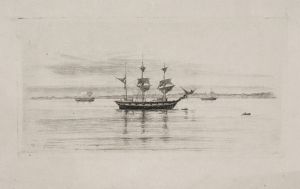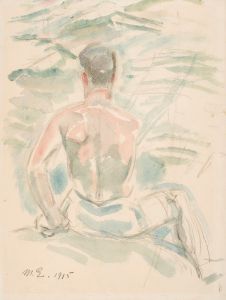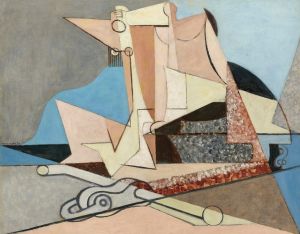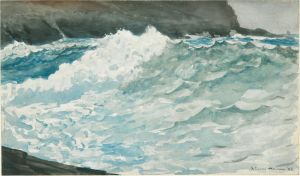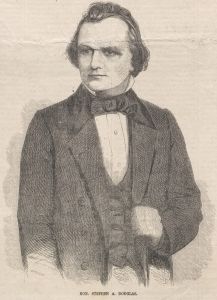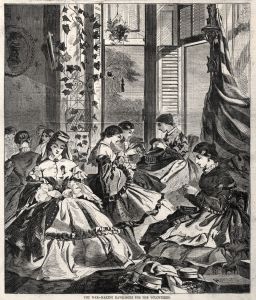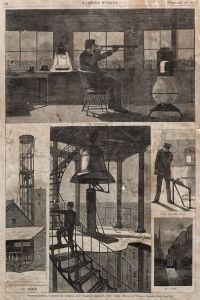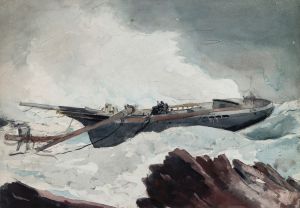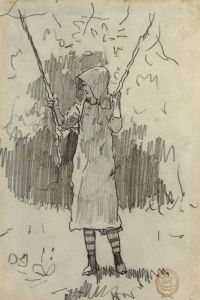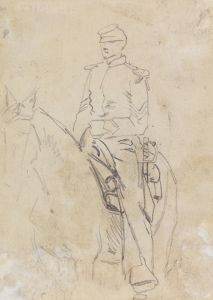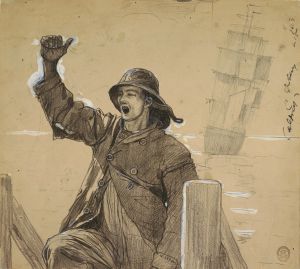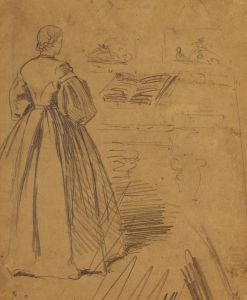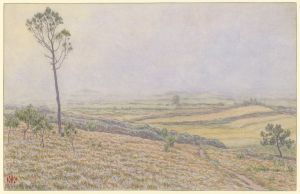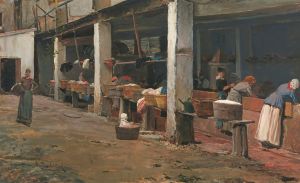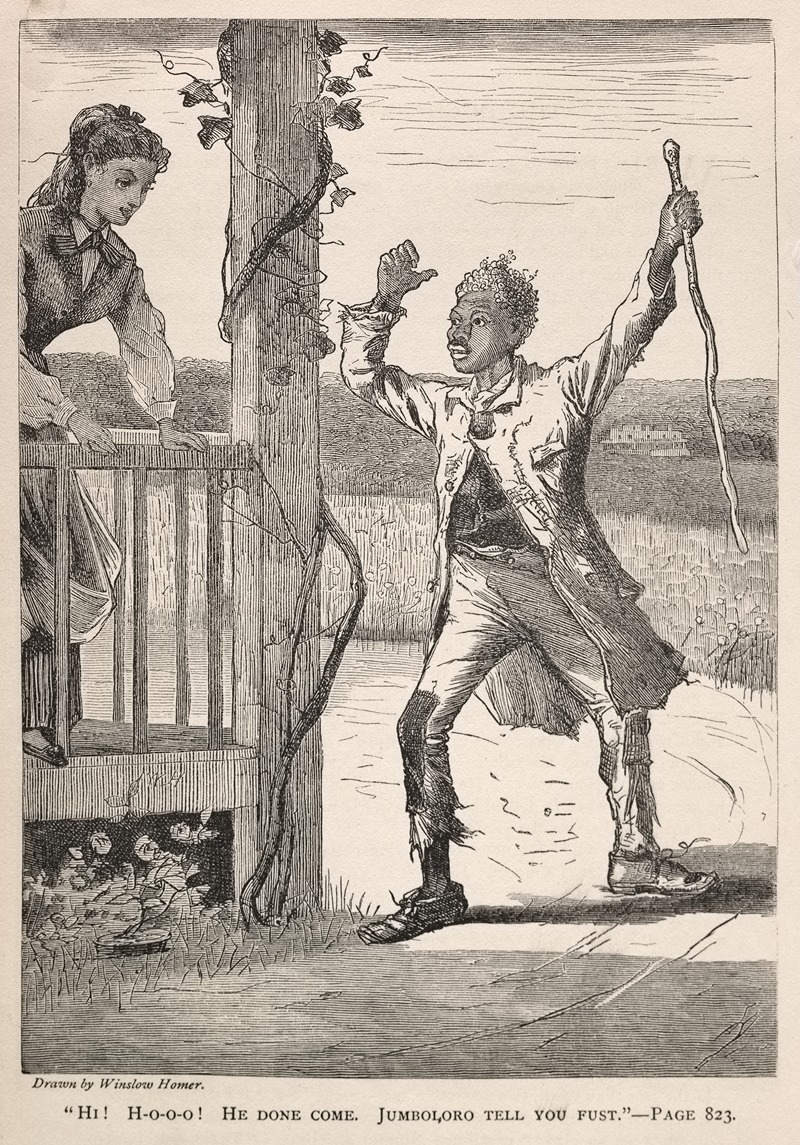
‘Hi! H-O-O-O! He Done Come. Jumboloro Tell You First.’
A hand-painted replica of Winslow Homer’s masterpiece ‘Hi! H-O-O-O! He Done Come. Jumboloro Tell You First.’, meticulously crafted by professional artists to capture the true essence of the original. Each piece is created with museum-quality canvas and rare mineral pigments, carefully painted by experienced artists with delicate brushstrokes and rich, layered colors to perfectly recreate the texture of the original artwork. Unlike machine-printed reproductions, this hand-painted version brings the painting to life, infused with the artist’s emotions and skill in every stroke. Whether for personal collection or home decoration, it instantly elevates the artistic atmosphere of any space.
Winslow Homer, an American painter renowned for his landscape and marine subjects, created a work titled "Hi! H-O-O-O! He Done Come. Jumboloro Tell You First." This piece is one of the many that showcase Homer's keen interest in capturing the essence of American life and the natural world. However, specific details about this particular painting, including its creation date, medium, and current location, are not widely documented or available in public records.
Homer's career spanned several decades during the 19th century, and he is often celebrated for his ability to depict scenes with vivid realism and emotional depth. His works frequently explore themes of human interaction with nature, often set against the backdrop of the American landscape. Homer is particularly noted for his seascapes and depictions of rural life, which reflect his personal experiences and observations.
The title "Hi! H-O-O-O! He Done Come. Jumboloro Tell You First." suggests a narrative or scene that may involve elements of communication or announcement, possibly within a community setting. The use of dialect in the title hints at a cultural or regional context, which Homer occasionally incorporated into his work to reflect the diverse voices and stories of American society.
Homer's artistic style evolved over the years, beginning with his early work as an illustrator during the Civil War, where he gained recognition for his ability to convey the human side of war. He later transitioned to painting, where he developed a distinctive style characterized by bold compositions and a masterful use of light and shadow. His later works often feature a more subdued palette and a focus on the interplay between humans and their environment.
Despite the lack of specific information about "Hi! H-O-O-O! He Done Come. Jumboloro Tell You First.," it is reasonable to consider it within the broader context of Homer's oeuvre. His paintings often invite viewers to ponder the stories behind the scenes he depicted, leaving much to interpretation and personal reflection.
Homer's legacy as one of America's foremost painters is well-established, with his works held in major museums and collections worldwide. His influence extends beyond his lifetime, inspiring generations of artists who admire his technical skill and ability to capture the spirit of his subjects.
In summary, while detailed information about "Hi! H-O-O-O! He Done Come. Jumboloro Tell You First." is limited, Winslow Homer's broader body of work provides insight into the themes and techniques that define his contribution to American art. His paintings continue to be celebrated for their narrative depth and artistic excellence.





